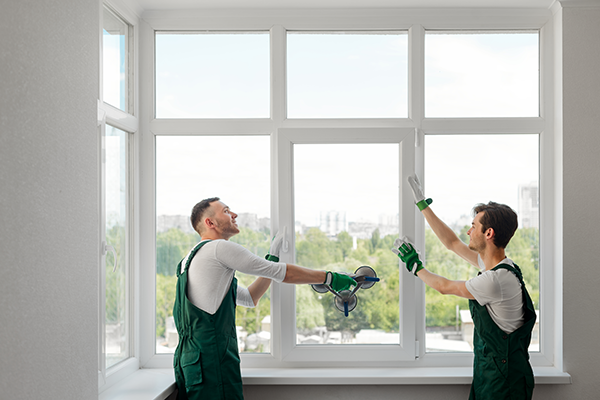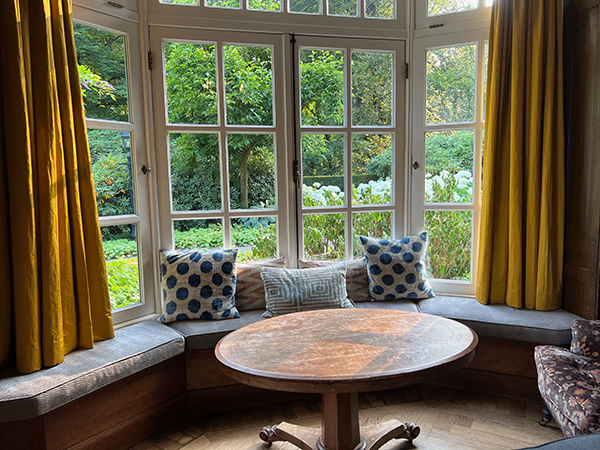Do You Need Planning Permission to Change Windows?
- Most window replacements on houses fall under permitted development.
- Changing windows on a flat or maisonette will need planning permission, but replacing like-for-like usually doesn't.
- If you are a leaseholder, you will need to get the freeholder's consent.
- If your home is in a listed building you must get listed building consent, changing the windows without consent is a crime.
- If your home is in a Conservation Area, National Park, designated Area of Outstanding Natural Beauty or World Heritage Site, you may need additional permissions.
- There are strict building regulations for glazing which you will need to adhere to.
- Some properties fall under an Article 4 directive which means than permitted development does not apply and you must obtain permission.
Many clients ask us 'Do I need planning permission to change windows?' looking for a simple yes or no answer; as you'll see in the article below, there are several factors which will influence whether a new window needs planning permission, or falls under permitted development. If you are buying or selling a house which is missing required planning permission, get in touch to see how we can help.
What happens if I change my windows without planning permission?
If the changes fall under permitted development, you won't need to apply for planning permission for windows. However, you should run your plans by the local authority to check that you're in the clear before you start works. If it turns out you should have gotten planning permission, this would be classed as a planning breach. It is possible to get retrospective planning permission, but if they local authority refuse, they can force you to replace the window again, this time with something which meets the planning criteria.
Some people prefer not to take this risk and so do not apply for retrospective permission; hoping the local authority won't notice and they'll get away with it. The problem with this 'ostrich' approach is that the local authority may find out through their own routine checks, or receive a tip-off from a nosy neighbour, up to four years later. It is also harder to sell a property which is missing the necessary permissions as your buyer's mortgage lender won't like it.

After four years, you can apply for a lawful development certificate (LDC), provided you did not know the works breached planning permission at the time. Once four years has lapsed with no enforcement action being taken, the local authority can no longer take enforcement action against you. The certificate will make it easier to sell the property, as it will satisfy your prospective buyers (and their lenders) that they will not face enforcement action as the new owners.
What happens if I change my windows without listed building consent?
If the changes affect the building's special historic character, you will have committed a crime. The maximum penalty is two years in prison or an unlimited fine. You will also be issued a listed building enforcement notice which will force you to restore the building or structure to its former state, to carry out other works to alleviate the effect of the unauthorised work & to ensure compliance with a previous listed building consent.
What happens if I change my windows without freeholder consent?
If you change your windows without the consent of the freehold landlord or management company, you'll be in breach of your lease. You could be made to pay to restore the property to its original condition, your relationship with your freeholder could be damaged beyond repair, and you may be forced to move. The works, if not remedied, will make it hard to sell the property.
Most leaseholds will have certain restrictions on what you can do to your windows, for example, to keep all the windows on the front of the building the same colour. Check the terms of your lease and contact your freeholder or management company if you're not sure whether you need consent.

Do you need planning permission to put in a new window?
You usually do need planning permission to install a new window opening, particularly if it overlooks neighbouring properties. If you are unsure, check with your local planning authority.
You will need planning permission if you are fitting a skylight/roof light that protrudes more than 150mm beyond the plane of the roof slope or is higher than the highest point of the roof, and if you are fitting an upper-floor side elevation window that is not obscure-glazed and can open (unless the opening part is 1.7 metres from the floor of the room).
New windows must meet building regulations.
Do I need planning permission to change a window to a door?
You will need building regulation permission to replace existing windows with a door. This can be done via an application online where you'll need to submit agreed plans, including detailed construction specifications for the door frame's insertion.
If your home is in a protected area such as a conservation or national park, there may be further restrictions in place to note. If your home is a listed building, you will need special building consent for significant works whether it is internal or external.
Regardless of the case, you should check with your local planning authority before carrying out any work.
Do I need planning permission to replace my windows with a different style?
If you are changing the visual style of your windows, you probably will need planning permission and building regs; for example, if you want to replace single-paned windows with multi-paned replacement windows. if you are changing the materials, for example replacing a wooden window with a UPVC window of the same shape and colour, you won't need planning permission, just building regs. Nonetheless, it is best to check with the local planning authority first, as their idea of a change in style may differ from yours.
In some cases, you can get consent to change the style of the existing windows on a listed building, so long as the style and materials are in keeping with the building's character; check your plans with your local conservation officer.
Do I need planning approval to replace windows, like for like?
If you replace windows with the same style and shape, you won't need planning permission. If the property is a listed building, you will need to make sure the style and materials are true to the character of the building. In some cases, where a historic window replacement did not meet the character of the building, the local council may not be willing to let you replace the windows, like-for-like; in fact, they may require you to change the style to restore the building's character.
In all cases, the new windows must meet building regulations.

Do I need to obtain planning permission for bay windows?
Bay windows protrude from the house and so are treated as extensions when it comes to planning permission. If you're replacing an existing bay window, it should fall under permitted development rights, unless you are making any of the changes above which do need permission. If you are adding a new bay window, this will require planning permission on the front of the house. New bay windows usually won't require planning permission on the side or rear of the property.
Do dormer windows require planning permission?
In the government guide on permitted development, class B covers additions etc to the roof:
B.1 Development in not permitted by Class B if -
any part of the dwellinghouse would, as a result of the works, extend beyond the plane of the existing roof slope which forms the principal elevation of the dwellinghouse and fronts a highway.
The guidance states:
The effect of this is that dormer windows as part of a loft conversion, or any other enlargement of the roof space, are not permitted development on a principal elevation that fronts a highway and will therefore require an application for planning permission. Rooflights in a loft conversion on a principal elevation may however be permitted development as long as they meet the requirements set out under Class C (see page 38).
Principal elevation has the meaning set out in the ‘General Issues’ section of this document (see page 7). The principal elevation could include more than one roof slope facing in the same direction. For example, where there are large bay windows on the front elevation, or where there is an ‘L’ shaped frontage. In such cases, all such roof slopes will form the 33 principal elevation and the line for determining what constitutes ‘extends beyond the plane of any existing roof slope’ will follow these slopes (see guidance on Class A (e) for an illustration of this on page 15).
Caragh is an excellent writer and copy editor of books, news articles and editorials. She has written extensively for SAM for a variety of conveyancing, survey, property law and mortgage-related articles.
Andrew started his career in 2000 working within conveyancing solicitor firms and grew hands-on knowledge of a wide variety of conveyancing challenges and solutions. After helping in excess of 50,000 clients in his career, he uses all this experience within his article writing for SAM, mainstream media and his self published book How to Buy a House Without Killing Anyone.









